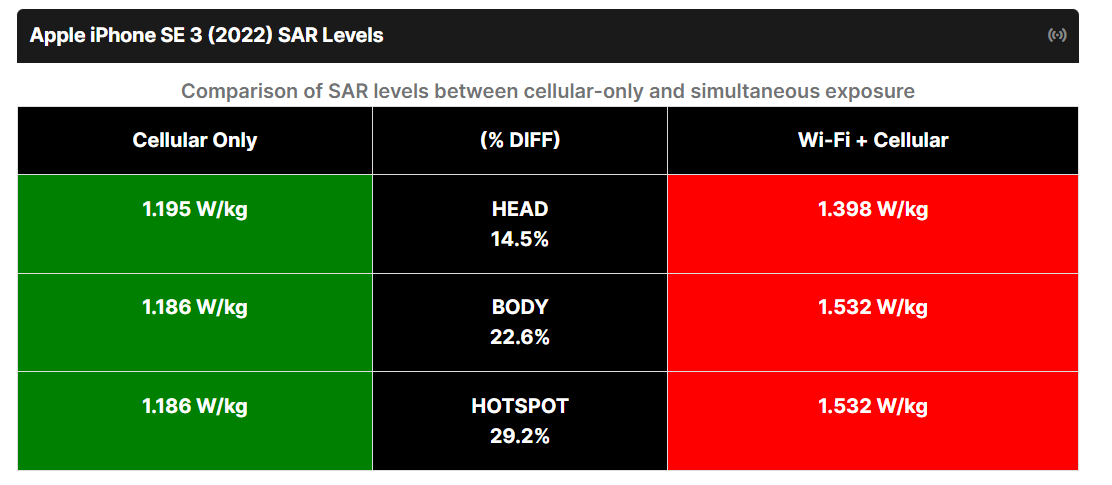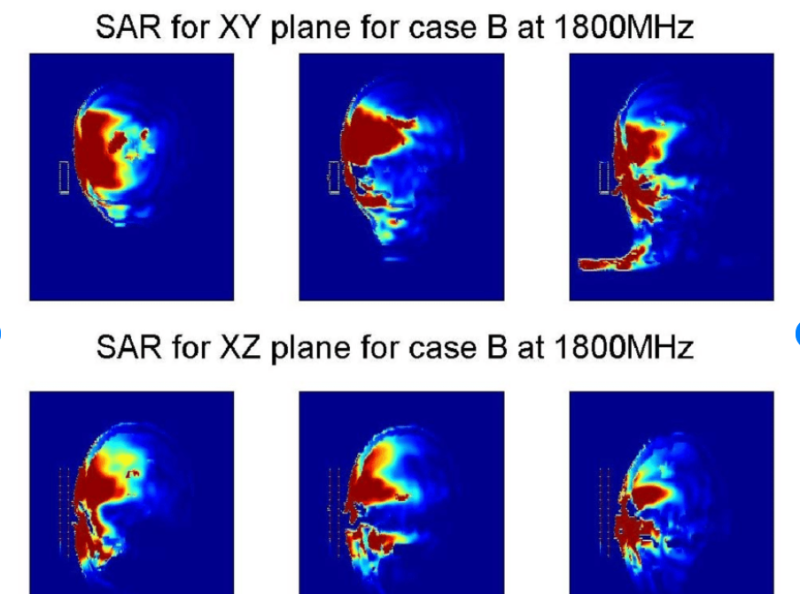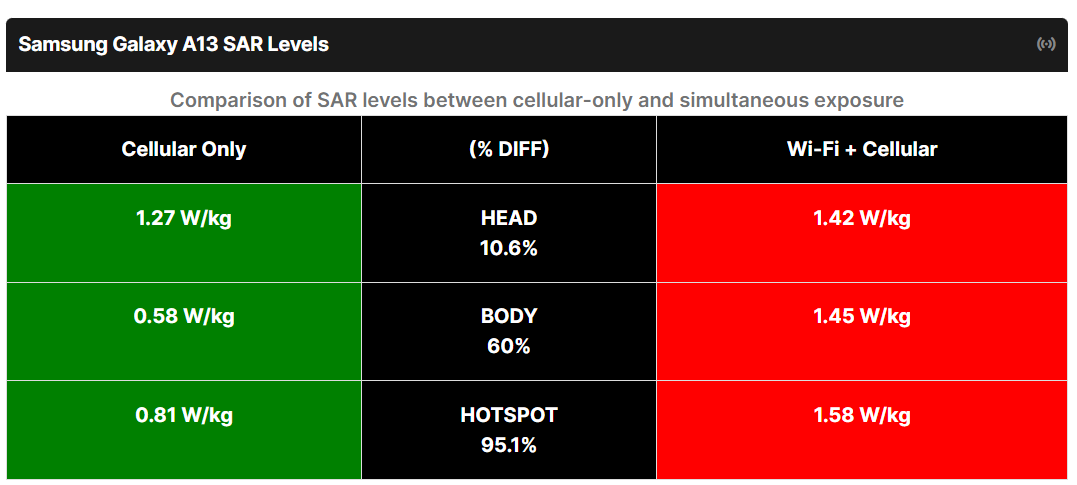In today’s world, smartphones are used by individuals of all ages. However, children and adults are affected differently by smartphone radiation due to differences in skull thickness and tissue composition. Understanding these differences is vital for making informed decisions and ensuring the safety of younger users.
The FCC’s Outdated Guidelines and SAR Testing
It’s important to note that current FCC guidelines for Specific Absorption Rate (SAR) testing are based on standards established in 1996. These guidelines have not been updated to reflect the advancements in smartphone technology or the changes in usage patterns. The SAR tests simulate the radiation exposure on a 200-pound man’s head, which does not account for the different anatomical structures of children or smaller adults.
Recently, the FCC lost a lawsuit due to the inadequacies of its outdated SAR guidelines, which fail to consider the increased vulnerability of children to radiation exposure. This oversight underscores the need for more comprehensive safety standards that reflect the diverse user demographics and modern usage scenarios.
For This Example
Radiation Levels of the Apple iPhone SE 3 (2022)
Apple iPhone SE 3 (2022) Safety Tip: Reducing Radiation Exposure
Turning off Wi-Fi and Bluetooth on your Apple iPhone SE 3 (2022) can significantly reduce your exposure to radiation. Our SAR comparison chart shows that by simply disabling these features, you can lower RF radiation exposure to your head by 14.5% and reduce body exposure by 22.6%. Additionally, using your phone as a hotspot with Bluetooth turned off can reduce your exposure by up to 29.2%.

SAR Levels for Apple iPhone SE 3 (2022)
Here’s a detailed look at the SAR levels for the Apple iPhone SE 3 (2022):
| Usage Scenario | SAR Level (W/kg) | Reduction with Wi-Fi/Bluetooth Off |
|---|---|---|
| Head SAR (Cellular Only) | 1.195 W/kg | 14.5% |
| Body SAR (Cellular Only) | 1.186 W/kg | 22.6% |
| Hotspot SAR (Cellular Only) | 1.186 W/kg | 29.2% |
| Head SAR (Simultaneous) | 1.398 W/kg | – |
| Body SAR (Simultaneous) | 1.532 W/kg | – |
| Hotspot (Simultaneous) | 1.532 W/kg | – |
Ranked SAR Levels
- Head SAR (Cellular Only): 1.20 W/kg is Ranked #80 (75.00% of limit)
- Body SAR (Cellular Only): 1.19 W/kg is Ranked #75 (74.38% of limit)
- Hotspot SAR (Cellular Only): 1.40 W/kg is Ranked #36 (87.50% of limit)
- Head SAR (Simultaneous): 1.53 W/kg is Ranked #48 (95.63% of limit)
- Body SAR (Simultaneous): 1.19 W/kg is Ranked #60 (74.38% of limit)
- Hotspot (Simultaneous): 1.53 W/kg is Ranked #37 (95.63% of limit)

To change phones, use the dropdown menu to view body and head visualizations for different age groups.
SAR Levels for Apple iPhone SE 3 (2022)
Head SAR (Wi-Fi Off)
The first set of images shows the SAR levels when a smartphone is held at the head with cellular transmission only. The SAR values vary significantly between a 5-year-old, a 10-year-old, and an adult:

- 5-year-old: The thinner skull and higher water content in the tissues of a child’s head mean that their bone marrow can absorb up to 10 times more radiation than that of an adult.
- 10-year-old: Slightly better protection than a 5-year-old but still significantly higher absorption compared to an adult.
- Adult: The thicker skull provides better protection, resulting in lower SAR levels.
Head Simultaneous SAR (Wi-Fi On)
When both cellular and Wi-Fi transmissions are active, the SAR levels increase for all age groups:

- 5-year-old: The combined effect of cellular and Wi-Fi transmission significantly raises the SAR, posing a greater risk.
- 10-year-old: The SAR levels are higher than with cellular transmission alone, but not as high as those for a 5-year-old.
- Adult: The SAR levels are higher than with cellular transmission alone but remain within the safety limits due to thicker skull protection.
Body SAR (Wi-Fi Off)
When smartphones are worn on the body with cellular transmission only:

- 5-year-old: The SAR levels indicate a high absorption rate due to the proximity of the device to vital organs.
- 10-year-old: Slightly lower SAR levels than a 5-year-old but still higher compared to an adult.
- Adult: The body SAR levels are lower, thanks to more robust tissue and bone structure.
Body Simultaneous SAR (Wi-Fi On)
With both cellular and Wi-Fi transmissions active, the SAR levels increase:

- 5-year-old: The highest levels of SAR are observed, indicating a significant risk.
- 10-year-old: Higher SAR levels than with cellular transmission alone, showing increased risk.
- Adult: Elevated SAR levels but still within the safety limits due to better tissue protection.
Why This Matters
Given the substantial body of research indicating potential health risks associated with smartphone-level electromagnetic radiation, it’s crucial to minimize exposure wherever possible. Studies, including those by the Interphone study, Hardell group, CERENAT study, U.S. National Toxicology Program (NTP), Ramazzini Institute, REFLEX Project, and the BioInitiative Report, all suggest increased health risks from smartphone radiation.
In particular, advancements in RF radiation research have shown that biological interactions occur beyond thermal effects. Treatments like TheraBionic, which use RF radiation at power levels up to 1000 times lower than those emitted by smartphones, have effectively treated inoperable liver cancer through non-thermal interactions. This includes resonance effects, disruption of cellular signaling, and potential modulation of the immune system.
These images and data underscore the importance of considering age when evaluating SAR levels and the potential risks of smartphone radiation. For children, whose bodies are still developing, the absorption rates are much higher, posing a greater risk of potential health effects.

Paper: “Comparison of electromagnetic absorption characteristics in the head of adult and a children for 1800 MHz mobile phones“
Introduction
The widespread use of mobile phones by all age groups, including children, has raised concerns about the safety of these devices. The primary measure of safety is the Specific Absorption Rate (SAR), which quantifies the rate at which the body absorbs radiofrequency (RF) energy. This report examines the findings of a study that compares SAR values in the heads of adults and children using 1800 MHz mobile phones.
Methodology
The study utilized the Finite Difference Time Domain (FDTD) method to simulate SAR values. Two models were used:
- An adult model based on established electromagnetic parameters.
- A new model based on computed tomographic images of a 10-year-old child, with electromagnetic parameters adjusted to reflect the child’s age.
The simulations were conducted using a CRAY T94 supercomputer, and the SAR values were normalized to the IEEE/ANSI recommended exposure limit of 1.6 W/kg for 1 gram of tissue.
Key Findings
- Higher SAR in Children: The study found that SAR values in children are significantly higher than those in adults. Specifically, when using child-specific electromagnetic parameters, the SAR for children was around 80% higher than that for adults. Even when using adult parameters in the child model, the SAR was still approximately 60% higher.
- Electromagnetic Parameters: The electromagnetic parameters for the child’s model were derived from studies on animals, which show that younger individuals have higher tissue conductivity and permittivity due to higher water content. This adjustment is crucial as it reflects the true RF absorption characteristics in children.
- Geometric Considerations: The study highlighted the differences in head size and tissue composition between children and adults, which contribute to the higher SAR values observed in children.
- Antenna Models: The mobile phones were modeled using patch antennas designed to operate at 1800 MHz. These antennas were chosen for their moderate directivity and the ability to radiate more in the direction opposite the head, potentially reducing exposure.
Results
- Peak SAR: For the child model with age-fitted parameters, the peak SAR was 3.636 W/kg, compared to 1.704 W/kg for the adult model.
- 1g-SAR: The 1g-SAR for the child model was 2.868 W/kg with age-fitted parameters and 2.618 W/kg with adult parameters, compared to 1.600 W/kg for the adult model.
- 10g-SAR: The 10g-SAR for the child model was 2.119 W/kg with age-fitted parameters and 1.984 W/kg with adult parameters, compared to 1.319 W/kg for the adult model.
Discussion
The significant increase in SAR values for children underscores the need for revised safety standards that take into account the higher susceptibility of children to RF exposure. Current compliance tests based on adult models may not provide adequate protection for younger users. The findings align with the World Health Organization’s (WHO) recommendations for further research on the health effects of electromagnetic fields (EMFs) in children.
Conclusions
The study conclusively shows that children are exposed to higher SAR values than adults under similar conditions, due to differences in head size, tissue composition, and electromagnetic parameters. This necessitates a reevaluation of safety standards and further research to ensure the protection of all mobile phone users, especially children.
Recommendations
- Revise Safety Standards: Regulatory bodies should consider updating SAR guidelines to reflect the higher absorption rates in children.
- Further Research: Additional theoretical and experimental studies are needed to explore the long-term health effects of RF exposure in children.
- Public Awareness: Educate parents and guardians about the potential risks associated with mobile phone use by children and promote safer usage practices.
This study provides critical insights into the differential impacts of RF exposure on children and adults, highlighting the need for tailored safety measures to protect younger mobile phone users.








